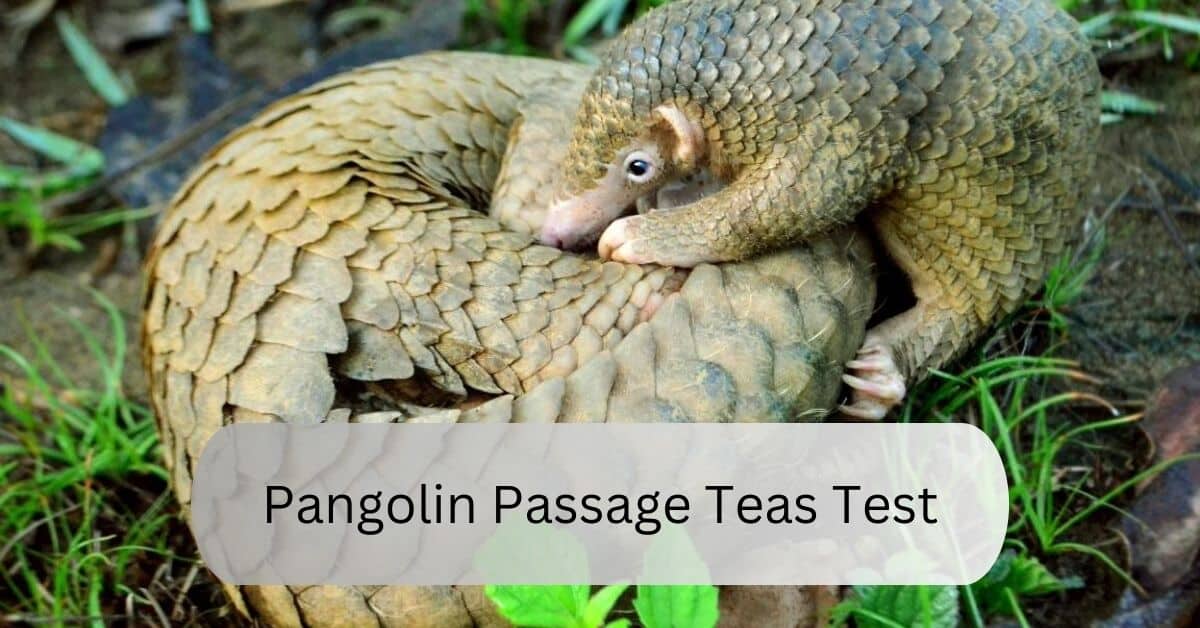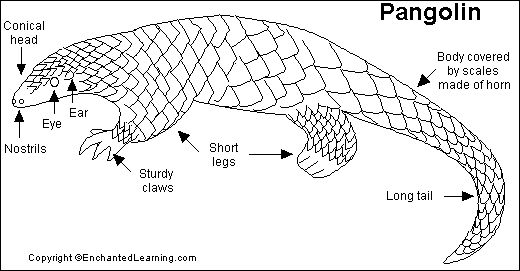
The Pangolin Passage Teas Test is a comprehensive examination designed to evaluate a student’s understanding of key concepts presented in the passage. The test is structured to ensure that students can recall information accurately and concisely summarize the given content.
In this article, we will delve into the specifics of the Pangolin Passage Teas Test and provide valuable insights to help you prepare effectively.
Structure of the Pangolin Passage Teas Test:

The Pangolin Passage Teas Test comprises multiple sections, each targeting different aspects of comprehension and retention. These sections include:
- Concise Summary: Students are required to provide a brief yet comprehensive summary of the passage.
- Key Terms and Definitions: This section tests the ability to recall and define crucial terms from the passage.
- Multiple Choice Questions: A series of questions designed to assess the understanding of specific details and concepts.
- Short Answer Questions: These questions require more detailed responses and explanations.
Preparing for the Pangolin Passage Teas Test:
To excel in the Pangolin Passage Teas Test, it is essential to adopt effective study strategies. Here are some tips to help you prepare:
1. Utilize Flashcards:
Flashcards are an excellent tool for memorizing key terms and concepts. Platforms like Quizlet offer a wide range of flashcards specifically designed for the Pangolin Passage Teas Test. By regularly reviewing these flashcards, you can enhance your retention and recall abilities.
2. Practice Concise Summaries:
One of the critical components of the Pangolin Passage Teas Test is the ability to provide a concise summary of the passage. Practice summarizing various texts in a few sentences, focusing on capturing the main ideas without unnecessary details.
3. Engage in Active Reading:
Active reading involves annotating the passage, highlighting key points, and taking notes. This approach helps in better understanding and remembering the content, which is crucial for the Pangolin Passage Teas Test.
4. Take Practice Tests:
Taking practice tests can significantly improve your performance in the actual Pangolin Passage Teas Test. These tests simulate the real exam environment, allowing you to gauge your preparedness and identify areas that need improvement.
Key Strategies for Success in the Pangolin Passage Teas Test:
To maximize your performance in the Pangolin Passage Teas Test, consider the following strategies:
1. Time Management:
Efficient time management is vital during the Pangolin Passage Teas Test. Allocate sufficient time for each section and avoid spending too long on any single question. This ensures that you can complete the test within the allotted time frame.
2. Focus on Keywords:
Pay attention to keywords in the passage and questions. Identifying and understanding these keywords can guide you in selecting the correct answers and crafting concise summaries.
3. Eliminate Distractions:
Create a distraction-free study environment to enhance your focus and concentration. This is particularly important when preparing for the Pangolin Passage Teas Test, as it requires a high level of attention to detail.
4. Review and Revise:
Regularly review your notes and flashcards, and revise the key concepts. Consistent revision helps reinforce your understanding and ensures that the information is fresh in your mind when taking the Pangolin Passage Teas Test.
Detailed Explanation of the Pangolin Passage Teas Test:
1. Analyzing Passage Structure and Themes:
Before tackling the Pangolin Passage Teas Test, it’s essential to analyze the structure and themes of the passage thoroughly.
Pay attention to the organization of ideas, transitions between paragraphs, and the overarching themes presented. Understanding these aspects will help you grasp the main points more effectively and formulate accurate summaries during the test.
Look for recurring motifs or central arguments that tie the passage together, as these are often critical in crafting a cohesive summary.
2. Application of Critical Thinking Skills:
The Pangolin Passage Teas Test not only tests your ability to recall information but also assesses your critical thinking skills.
Expect questions that require you to analyze, evaluate, and infer from the passage’s content. Practice applying critical thinking strategies such as identifying assumptions, evaluating evidence, and drawing logical conclusions.
These skills are crucial for interpreting complex passages and answering questions accurately.
Integration of Contextual Knowledge:

In addition to understanding the passage itself, the Pangolin Passage Teas Test may require you to integrate contextual knowledge from related fields or subjects.
Be prepared to connect the passage’s themes or concepts to broader topics in history, science, literature, or current events.
This interdisciplinary approach not only enriches your understanding but also enhances your ability to provide insightful responses to test questions.
Strategic Approach to Answering Questions:
When answering multiple-choice and short-answer questions in the Pangolin Passage Teas Test, adopt a strategic approach. Start by carefully reading each question and all the answer options.
Eliminate obviously incorrect answers first to narrow down your choices. Pay attention to qualifiers such as “most likely,” “least likely,” or “best supports,” which provide clues to the correct answer.
For short-answer questions, structure your responses clearly, providing sufficient detail to demonstrate your understanding while being concise.
Importance of Vocabulary Mastery:
A crucial aspect of excelling in the Pangolin Passage Teas Test is mastering vocabulary relevant to the passage’s content.
Pay close attention to terminology used throughout the text, as questions may directly assess your understanding of these terms.
Utilize resources like glossaries, dictionaries, and context clues within the passage to enhance your vocabulary comprehension.
By familiarizing yourself with key terms and their meanings, you’ll not only improve your ability to answer specific questions but also to formulate accurate summaries and explanations.
Strategic Reading Strategies:
Effective reading strategies play a significant role in preparing for the Pangolin Passage Teas Test. Practice skimming and scanning techniques to quickly identify main ideas, key details, and structural elements within the passage.
Skimming allows you to grasp the overall content and main points, while scanning helps locate specific information relevant to answering questions.
Additionally, annotate the passage as you read to mark important details, make connections between ideas, and jot down initial thoughts for concise summaries or responses.
Enhancing Writing Skills for Summaries:

Crafting concise summaries is a crucial skill tested in the Pangolin Passage Teas Test. To excel in this aspect, focus on enhancing your writing skills by practicing summarization techniques. Start by identifying the main idea and supporting details of the passage.
Structure your summary with a clear introduction, a succinct statement of the main idea, and supporting points that highlight key concepts. Use transitional phrases to connect ideas logically and ensure coherence throughout your summary.
By honing your summarization abilities, you’ll be better equipped to effectively communicate the passage’s content in a clear and concise manner during the test.
Conclusion:
Preparing comprehensively for the Pangolin Passage Teas Test involves mastering vocabulary, employing strategic reading strategies, and refining summarization skills. By dedicating time to enhance your vocabulary comprehension, practicing effective reading techniques, and refining your ability to craft concise summaries, you’ll build confidence and proficiency in tackling this assessment. Remember to engage actively with the passage, apply critical thinking skills, and consistently review and revise your understanding. With these strategies in place, you’ll be well-prepared to achieve success in the Pangolin Passage Teas Test and demonstrate your ability to comprehend, analyze, and summarize complex textual content effectively.





